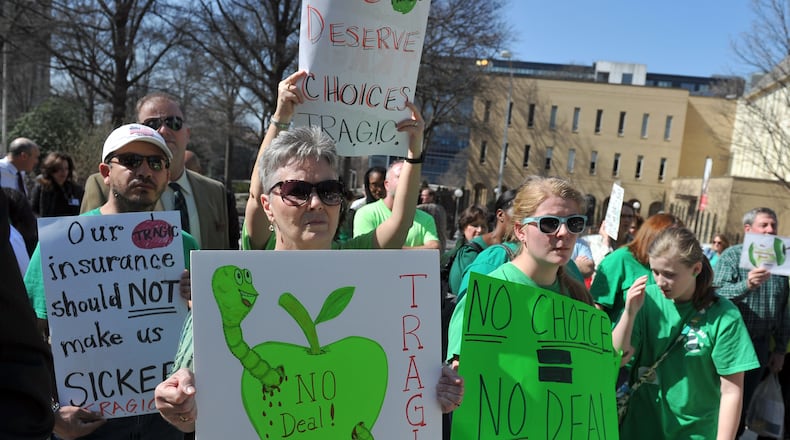Georgia’s teachers and state employees will see an average 3.7 percent increase in health insurance premiums starting Jan. 1.
The size of the increase for those on the State Health Benefit Plan will depend on the type of health plan they are enrolled in. Some retirees will see their premiums increase 15 percent or more; others will see their premiums decrease.
The state Department of Community Health board approved rates Thursday for the $3 billion SHBP, which covers about 650,000 Georgians.
The good news for employees and retirees: They won’t see an increase in deductibles or co-pays, DCH officials said.
The increase is slightly higher than it was this year, when plan members saw their rates increase an average of 2.5 percent, depending on their coverage.
Teacher, employee and retiree groups have kept an especially close eye on their health plan in recent years after the DCH made substantial changes in 2014 in an effort to hold down costs.
Those changes led to the creation of a protest group called TRAGIC, which rallied at the Capitol to turn back some of the changes that cost plan members significantly more money.
Jeff Rickman, who oversees the plan for the DCH, said next year’s increase aimed to bolster the plan’s finances. The rates have generally held steady over the past few years after a period of turmoil, when teachers and employees complained the state raided the program’s reserves to pay bills as premiums ballooned and benefits were cut.
Officials said overall health care costs in the plan are expected to rise 4.7 percent, but agency cost-cutting will make up the difference between the rising expenses and the premium increases.
The Atlanta Journal-Constitution reported in June that the DCH could save about $56 million a year through its effort to remove from the program ineligible family members of those enrolled in the plan. A recent audit found almost 16,000 dependents of plan members had been receiving coverage even though they were ineligible.
The state has also improved its bottom line by shifting tens of millions of dollars in costs for covering noncertified school employees — bus drivers and lunchroom workers, for instance — to local school districts.
Some teachers and employees are likely to note that the increase will be larger than the 2 percent pay raise the state offered them this year. Some school districts are not passing along the state raise money, so not everyone is getting the 2 percent boost.
John Palmer, a Cobb County educator and spokesman for TRAGIC, said the group was thankful that the DCH continued to offer several plans for members and tried to keep premiums down.
“However, the SHBP helped the state through the Great Recession with over $600 million in reserve funds; teachers and state employees rebuilt those reserves over the past decade by paying higher premiums and taking on a greater share of health care costs,” he said. “While Georgia has built up over $2 billion in surpluses, state workers have seen higher health care ‘cost-sharing’ affect their personal finances every year.
“These increases add up over time and, combined with stagnant wages, hurt the state’s ability to attract and retain quality candidates for state agencies and local school positions.”
Palmer said the increases would be particularly hard on retired state employees, who haven’t gotten a cost-of-living increase in their pensions in about a decade. Lawmakers have approved one-time bonus payments the past few years.
GOVERNMENT AND POLITICAL NEWS
If it happens in Washington or under the Gold Dome — or somewhere else — and it affects Georgians, The Atlanta Journal-Constitution has somebody there to tell you what it means. Follow our coverage at http://www.myAJC.com/politics.
About the Author
Keep Reading
The Latest
Featured



